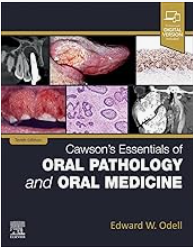
Book
Mosby's Textbook for Nursing Assistants
ISBN : 9780443121319
Author : Leighann Remmert
Publisher : Elsevier
Year : 2024
Language : English
Type : Book
Description : Cover image Title page Disclaimer Table of Contents Copyright Dedication About the Authors Acknowledgments Instructor Preface Student Preface CHAPTER 1. Health Care Agencies PURPOSES TYPES OF AGENCIES ORGANIZATION THE NURSING TEAM STAFFING NURSING CARE PATTERNS PAYING FOR HEALTH CARE SAFETY AND QUALITY CHAPTER 2. The Person’s Rights PATIENT RIGHTS RESIDENT RIGHTS Grievances PROTECTING RIGHTS CHAPTER 3. The Nursing Assistant HISTORY AND CURRENT TRENDS FEDERAL AND STATE LAWS ROLES AND RESPONSIBILITIES EMPLOYEE ORIENTATION CHAPTER 4. Delegation DELEGATION GUIDELINES WHO CAN DELEGATE DELEGATION PROCESS YOUR ROLE IN DELEGATION CHAPTER 5. Ethics and Laws ETHICAL ASPECTS LEGAL ASPECTS REPORTING ABUSE WILLS CHAPTER 6. Student and Work Ethics Health, Hygiene, and Appearance Preparing for School or Work Teamwork Stress Harassment Resigning From A Job Losing A Job Drug Testing Unethical Student Behavior CHAPTER 7. The Person and Family The Whole Person Basic Needs Culture Spirituality and Religion Sexuality Addressing the Person Health Care Beliefs and Practices Persons Needing Health Care Effective Communication Behavior Family CHAPTER 8. Health Team Communications The Medical Record CARE SUMMARIES The Nursing Process Reporting and Recording Electronic Devices Phone Communications CHAPTER 9. Medical Terminology Medical Terms Abdominal Regions Directional Terms Positional Terms Abbreviations Common Terms and Phrases CHAPTER 10. Body Structure and Function Organization of The Body The Integumentary System The Musculo-Skeletal System The Nervous System The Circulatory System The Lymphatic System The Respiratory System The Digestive System The Urinary System The Reproductive System The Endocrine System The Immune System CHAPTER 11. Growth and Development Principles Infancy (Birth to 1 Year) Toddlerhood (1 to 3 Years) Preschool (3 to 6 Years) School Age (6 to 9 or 10 Years) Late Childhood (9 or 10 to 12 Years) Adolescence (12 to 18 Years) Young Adulthood (18 to 40 Years) Middle Adulthood (40 to 65 Years) Late Adulthood (65 Years and Older) Sexuality CHAPTER 12. The Older Person Psychological and Social Changes Physical Changes Sexuality and Older Persons Housing CHAPTER 13. The Person’s Unit Comfort Room Furniture and Equipment CHAPTER 14. Safety A Safe Setting Accident Risk Factors Identifying the Person Preventing Burns Preventing Poisoning Preventing Suffocation Preventing Equipment Accidents Hazardous Chemicals Disasters Workplace Violence Risk Management CHAPTER 15. Preventing Falls Causes and Risk Factors for Falls Fall Prevention Programs Transfer/Gait Belts The Falling Person Moving the Person From the Floor CHAPTER 16. Restraint Alternatives and Restraints Forms of Restraint History of Restraint Use Restraint Alternatives Risks from Restraint use Laws, Rules, and Guidelines Restraints Applying Restraints Reporting and Recording CHAPTER 17. Preventing Infection Microorganisms Infection Asepsis Bloodborne Pathogen Standard Surgical Asepsis CHAPTER 18. Isolation Precautions Standard Precautions Transmission-Based Precautions Used Laundry Double-Bagging Used Supplies And Equipment Collecting Specimens Transporting Persons CHAPTER 19. Safe Handling and Positioning Work-Related Injuries Principles Of Body Mechanics Safe Handling Programs Positioning The Person CHAPTER 20. Moving the Person Planning A Safe Move Protecting The Skin Moving Persons In Bed Moving the Person Up in Bed Turning Persons Sitting On The Side Of The Bed (Dangling) Re-Positioning In A Chair Or Wheelchair CHAPTER 21. Transferring the Person Wheelchair And Stretcher Safety Stand And Pivot Transfers Lateral Transfers Mechanical Lifts CHAPTER 22. Bedmaking Types of Beds Linens Making Beds CHAPTER 23. Oral Hygiene Purpose of Oral Hygiene Flossing Equipment Brushing and Flossing Teeth Dentures Reporting and Recording CHAPTER 24. Daily Hygiene and Bathing Daily Care Bathing Perineal Care Reporting And Recording CHAPTER 25. Grooming Hair Care Shaving Nail and Foot Care CHAPTER 26. Changing Garments Garments Changing Patient Gowns CHAPTER 27. Urinary Needs Normal Urination Voiding Equipment Urinary Incontinence Bladder Training Bladder Scanning CHAPTER 28. Urinary Catheters Catheters Catheter care Urine Drainage Systems Removing Indwelling Catheters Condom Catheters FEMALE EXTERNAL CATHETERS CHAPTER 29. Bowel Needs Normal Bowel Elimination Factors Affecting BMs Common Problems Bowel Training Enemas The Person with an Ostomy CHAPTER 30. Nutrition Basic Nutrition Special Diets Food Intake CHAPTER 31. Meeting Nutrition Needs Factors Affecting Eating and Nutrition Dysphagia Nutrition and Food Requirements Preparing for Meals Serving Meals Feeding the Person Foodborne Illness CHAPTER 32. Fluid Needs Fluid Balance Special Fluid Orders Intake and Output Providing Drinking Water CHAPTER 33. Nutritional Support and IV Therapy Enteral Nutrition Parenteral Nutrition IV Therapy CHAPTER 34. Vital Signs Measuring and Reporting Vital Signs Body Temperature Pulse Respirations Blood Pressure Pulse Oximetry Pain Reporting and Recording CHAPTER 35. Exercise and Activity Mobility and Immobility Range-of-Motion Exercises Positioning Devices Walking AIDS Ambulation CHAPTER 36. Comfort, Rest, and Sleep Comfort Rest Sleep CHAPTER 37. Admissions, Transfers, and Discharges Admissions Moving The Person To A New Room Transfers and Discharges CHAPTER 38. Assisting With the Physical Examination Your Role Equipment Preparing the Person Positioning and Draping Assisting with The Exam CHAPTER 39. Collecting and Testing Specimens Urine Specimens Stool Specimens Sputum Specimens Blood Glucose Testing CHAPTER 40. The Person Having Surgery Psychological Care Pre-Operative Care Sedation and Anesthesia Post-Operative Care CHAPTER 41. Wound Care Types of Wounds Wound Healing Dressings Binders and Compression Garments Heat and Cold Applications The Whole Person CHAPTER 42. Pressure Injuries Terms and Causes Risk Factors Pressure Injury Sites Pressure Injury Stages Observations Prevention and Treatment Complications Reporting and Recording CHAPTER 43. Heat and Cold Applications Heat Applications Cold Applications Moist and dry Applications Applying Heat and Cold Cooling and Warming Blankets CHAPTER 44. Oxygen Needs Factors Affecting Oxygen Needs Altered Respiratory Function Respiratory Tests Meeting Oxygen Needs Assisting With Oxygen Therapy CHAPTER 45. Respiratory Support and Therapies Artificial Airways Suctioning Mechanical Ventilation Chest Tubes Devices for Sleep Apnea CHAPTER 46. Rehabilitation Needs Rehabilitation Restorative Nursing The Whole Person The Person’s Setting The Rehabilitation Team Rehabilitation Programs Quality of Life CHAPTER 47. Hearing, Speech, and Vision Problems Hearing Disorders Speech Disorders Eye Disorders CHAPTER 48. Cancer, Immune System, and Skin Disorders Cancer Immune System Disorders Skin Disorders CHAPTER 49. Nervous System and Musculo-Skeletal Disorders Nervous System Disorders Musculo-Skeletal Disorders CHAPTER 50. Cardiovascular, Respiratory, and Lymphatic Disorders Cardiovascular Disorders Respiratory Disorders Lymphatic Disorders CHAPTER 51. Digestive and Endocrine Disorders Digestive Disorders Endocrine Disorders CHAPTER 52. Urinary and Reproductive Disorders Urinary System Disorders Reproductive Disorders Pelvic Organ Prolapse CHAPTER 53. Mental Health Disorders Anxiety Disorders Psychotic Disorders Mood Disorders Personality Disorders Substance Use Disorder Eating Disorders Suicide Care and Treatment CHAPTER 54. Confusion and Dementia Confusion Dementia Alzheimer’s Disease Care of Persons with Ad and Other Dementias CHAPTER 55. Intellectual and Developmental Disabilities Developmental Disabilities IDDs Down Syndrome Fragile X Syndrome ADHD Autism Spectrum Disorder Cerebral Palsy Spina Bifida Hydrocephalus Fetal Alcohol Spectrum Disorders CHAPTER 56. Caring for Mothers and Babies Safety and Security Signs and Symptoms of Illness Helping Mothers Breast-Feed Bottle-Feeding Babies Burping The Baby Diapering A Baby Umbilical Cord Care Circumcision Care Bathing An Infant Nail Care Weighing Infants Care of The Mother CHAPTER 57. Assisted Living Assisted Living Residents ALR Services and Living Areas Staff Requirements Service Plans Transfer, Discharge, and Eviction CHAPTER 58. Emergency Care Emergency Care Sudden Cardiac Arrest CPR Choking Respiratory Arrest Poisoning Heart Attack Hemorrhage Fainting Shock Stroke Seizures Concussions Cold- and Heat-Related Illnesses Burns CHAPTER 59. End-of-Life Care Terminal Illness Attitudes About Death The Stages of Dying Comfort Needs The Family Advance Care Planning Signs of Death Care of The Body After Death Caring for The Family CHAPTER 60. Getting a Job Sources of Jobs What Employers Look For Job Applications The Job Interview Accepting or Declining A Job Offer Drug Testing Review Question Answers Appendix A. National Nurse Aide Assessment Program (NNAAP®) Written Examination Content Outline Appendix B. Minimum Data Set: Selected Pages Appendix C. Care Area Assessment (CAA): Sample Page Appendix D. Infant and Child Safety Appendix E. Personal Safety Glossary Key Abbreviations Index IBC1 IBC2 IBC3








